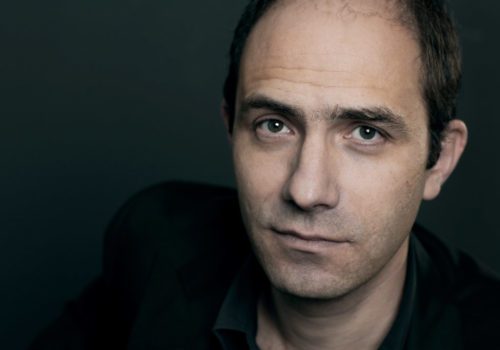The image of his father developing photos under a red light in the bathroom is one of Julien Frydman’s first memories. Now in his third year as director of Paris Photo, this alumnus of Paris-Dauphine, where he graduated with an MBA in 1992, has always wanted to, “do something with content, with meaning, with beauty and sensitivity. I was already a little off.” One of his first internships was at the Opéra de Paris before he joined the French Ministry of Culture and National Education in 1992, where he worked under Jack Lang, who put him in charge of the development of new technology and media.
In 1994, he became an independent media producer designing CD-ROMs “It was the start of multimedia,” he says. “CD-ROMs were considered innovative tools. Can you imagine? The internet didn’t even exist yet. I felt like I was doing door-to-door demonstrations of some object from the future.”
In 1998, TBWA recruited him as their former Consultant, then as the Creative Director of multimedia development. “I’ve often worked on multimedia projects,” he says. “And from this perspective, Magnum was always able to renew itself: constantly finding new ideas for its 80 photographers, 20 of which were dead, passing from one opportunity to the next, from an exhibition to a museum to a commission for the press.” In 2002, he joined Henri Cartier-Bresson and Robert Capa’s legendary agency as the head of corporate activities and partnerships. Four years later, he was in charge. In addition to some 100 annual exhibitions, he oversaw not only the creation of La Frace de Raymond Depardon and Fashion Magazine, but also Magnum’s 60th anniversary, the opening of the Magnum gallery and the project for an eponymous foundation.
What Julien Frydman has retained personally from his experience at Magnum is how certain artists try to maintain a balance of harmony and high standards in their work. “It’s essential,” he says, “when working with artists, to be able to feel that the choices made have been meaningful, and that there’s more than one coherence in what they are trying to tell.” He smiles, “Even if that isn’t always obvious when we’re on the other side of things.”
Frydman freely admits that his business experience is to thank for his success with Paris Photo. “You and I both know that sponsorship is essential for an event like Paris Photo. Understanding that, and being comfortable in discussions with brands, knowing what offers will attract them while not undermining the art—that’s what makes a difference. So far I’ve been able to work together with partners without any interference.”
When reminded that he once said an interview that he’s, “more of a businessman than a curator,” he seemed surprised. “I said that? I’m really ambiguous.” Frydman is a man of contradictions, a man of both swift action and measured reflection. “That’s how I am,” he says. “There’s always that tension.”
Frydman remarks on the kinds of artists who are underrepresented in the photo world, especially those working in unconventional media, who quickly find themselves excluded. “How can we discuss the different facets of photographs today if we don’t exhibit them?” For Frydman, photography is a young artform, which is why it’s so necessary that the world’s biggest photo fair be representative of that creative energy. “What I’m most proud of is how we’ve been able to throw off that paradigm and renew photography’s place in art history, where there’s a bias towards the establishment.” This year, Frydman is convinced that Paris Photo – Los Angeles, which will celebrate its first anniversary next spring, will give voice to how the image is evolving.
It’s about building relationships, being attentive to the emergence of new styles and visual languages, about bringing into dialogue the different families that make up contemporary photography. That, anyway, is how he sees his role. While François Hébel, director of the Rencontres d’Arles, has just announced his departure, Frydman advises us not to get ahead of ourselves, at least for the moment. A consultant for the Luma Foundation, he nonetheless has a few ideas about the city of Arles and future projects. He believes in this kind of decentralized energy, and that the historic city of Arles can only renew itself through the diversity of its cultural offerings.
Curious by character, he would like to get to know all of the artists on display at Paris Photo, but he’s also reserved. For him, photography is highly diverse, its riches are infinite. Cultivating a certain affection for photojournalism, Julien Frydman is a man of passion who, whatever the story is, wants to be a part of it.
















